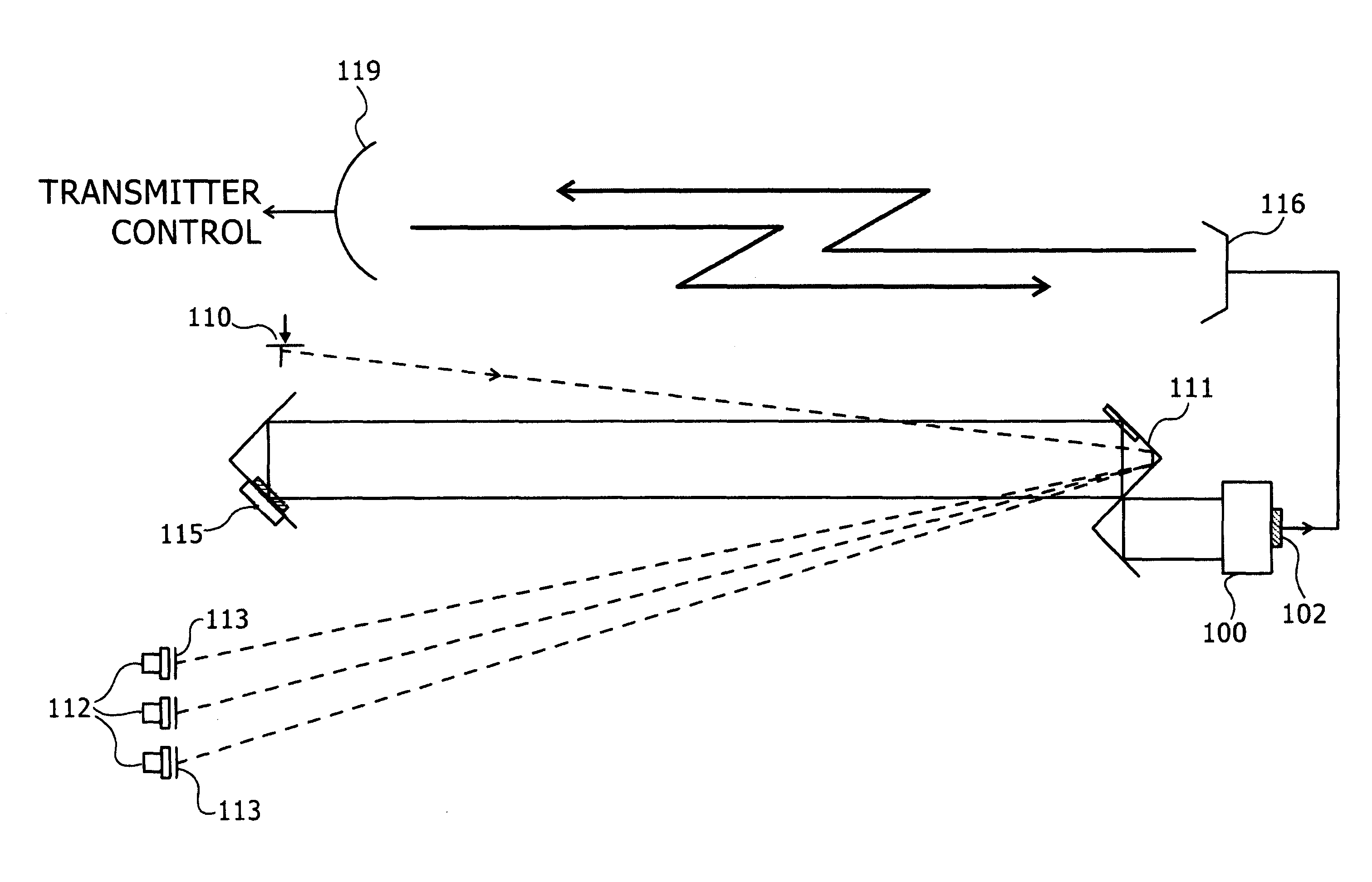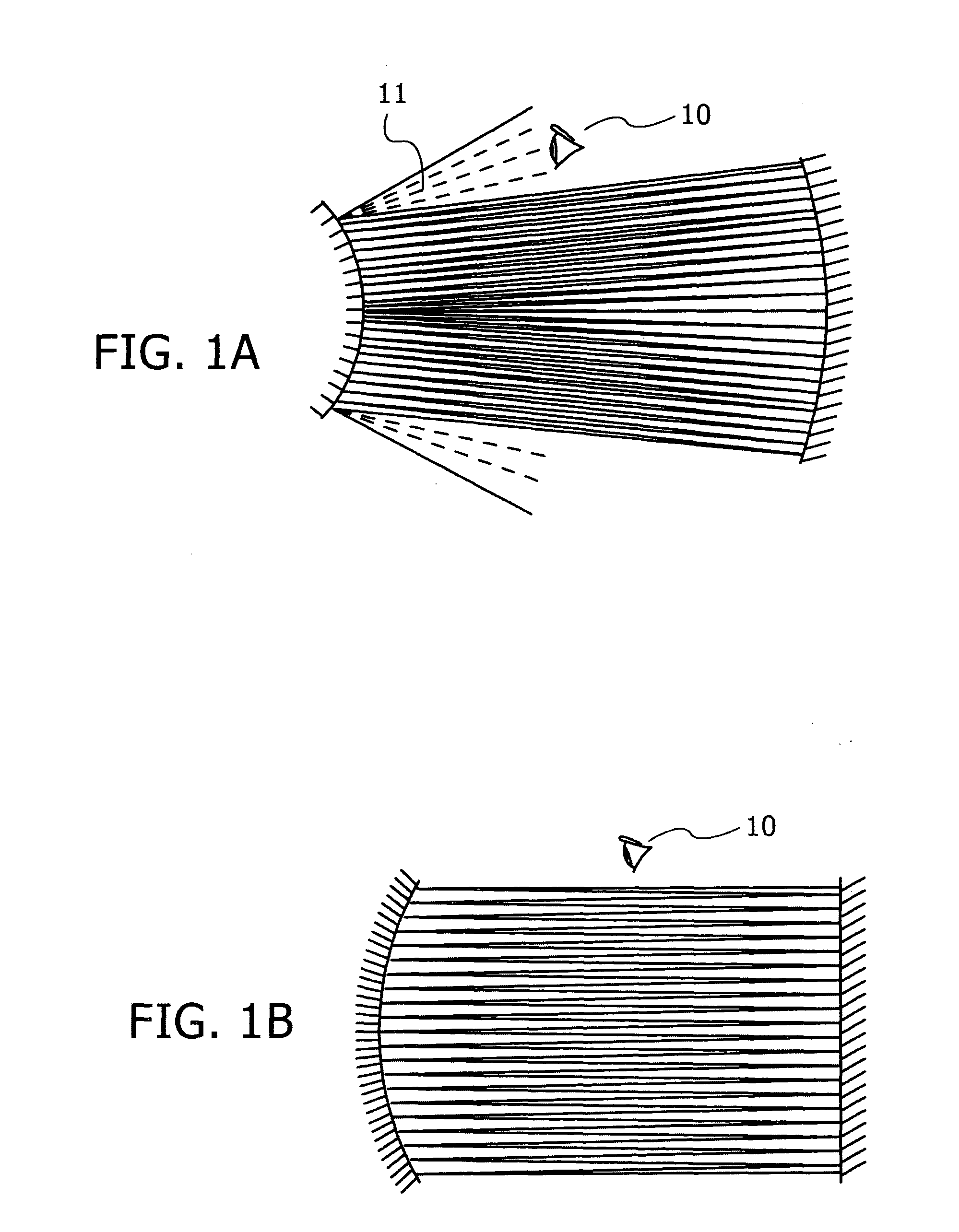Wireless laser system for power transmission utilizing a gain medium between retroreflectors
a laser system and gain medium technology, applied in the direction of lasers, transmission, biochemical equipment and processes, etc., can solve the problems of limiting the detection capability of the system, affecting the safety of spillover power, and power may be dissipated in a way
- Summary
- Abstract
- Description
- Claims
- Application Information
AI Technical Summary
Benefits of technology
Problems solved by technology
Method used
Image
Examples
Embodiment Construction
[0090]Reference is now made to FIG. 2, which illustrates schematically an exemplary power transmitting system comprising an electrically powered transmitter T, and a receiver R, which allows extraction of electric energy, in order to power, for instance, a mobile electronic device. The transmitter should be mounted at a safe location out of reach of possible human contact, such as on the ceiling of a room or connected to a lighting fitting. The position should be such that the transmitter has a line of sight to as much of the room's volume as possible. Suitable positions may be to embed the transmitter within a ceiling lamp, within a television set or within a speaker unit, one approach to achieve that would be to add a standard lamp connection to the transmitter so that it can connect to a standard lamp fitting.
[0091]T and R form a laser resonator, in which significant power circulates in the form of a laser beam(s), which may advantageously be in the infra-red. Since this arrangem...
PUM
| Property | Measurement | Unit |
|---|---|---|
| field of view | aaaaa | aaaaa |
| field of view | aaaaa | aaaaa |
| surface area | aaaaa | aaaaa |
Abstract
Description
Claims
Application Information
 Login to View More
Login to View More - R&D
- Intellectual Property
- Life Sciences
- Materials
- Tech Scout
- Unparalleled Data Quality
- Higher Quality Content
- 60% Fewer Hallucinations
Browse by: Latest US Patents, China's latest patents, Technical Efficacy Thesaurus, Application Domain, Technology Topic, Popular Technical Reports.
© 2025 PatSnap. All rights reserved.Legal|Privacy policy|Modern Slavery Act Transparency Statement|Sitemap|About US| Contact US: help@patsnap.com



